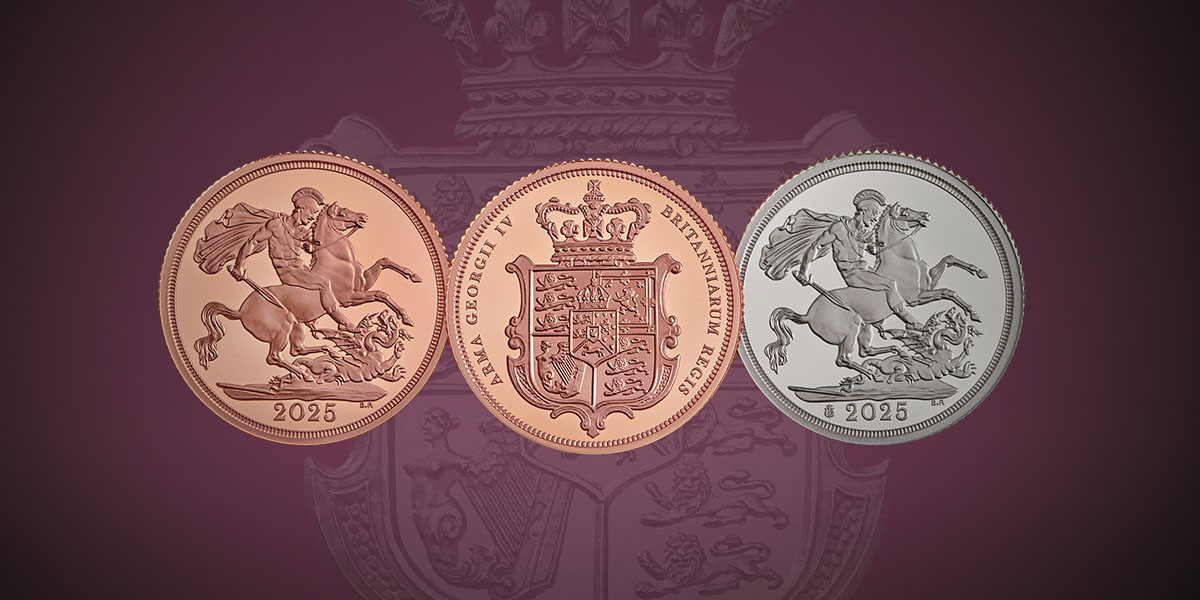THE SOVEREIGN
The ‘Chief Coin of the World’
Our flagship coin continues its revered legacy with The Sovereign 2025 Collection, featuring a variety of Proof, Brilliant Uncirculated and bullion coins in addition to specially curated historic sets.
This year marks the final time we will include rose gold editions of The Sovereign in our collection, which fittingly feature Benedetto Pistrucci’s classic St George and the dragon design.
The 2025 edition of The Sovereign pays tribute to the coin’s rich history, featuring Jean Baptiste Merlen’s Royal Arms design that first appeared on a Sovereign 200 years ago.
In a rare first for The Sovereign, the 2025 collection also features two silver editions of the coin, the first of their kind from The Royal Mint.






